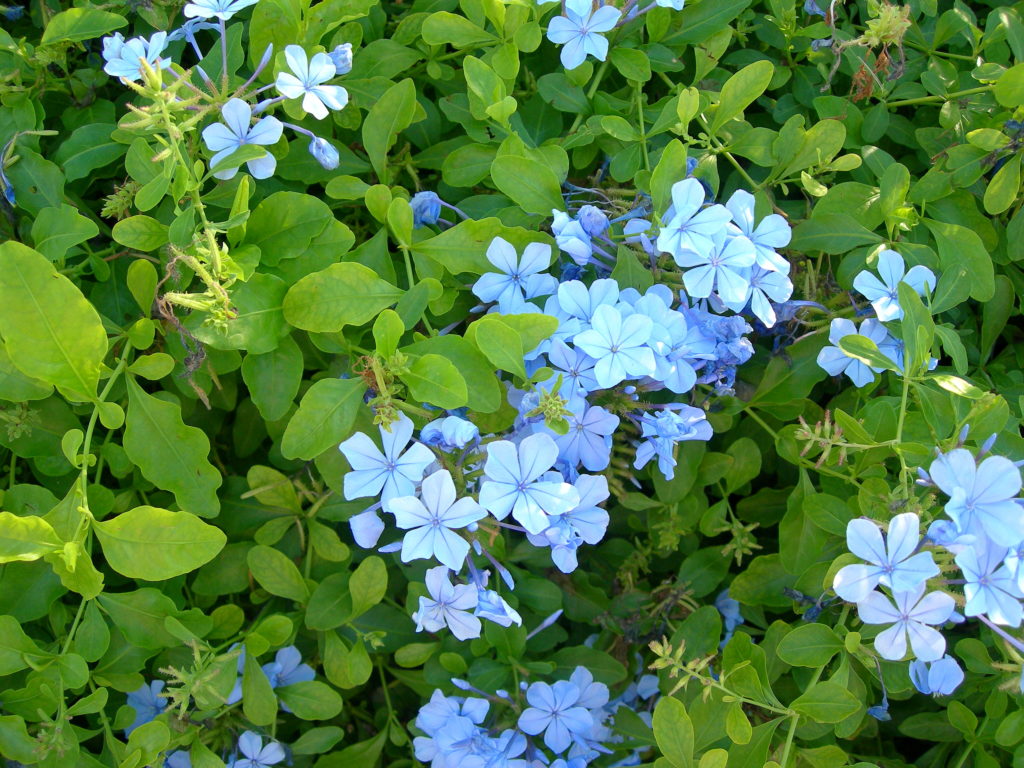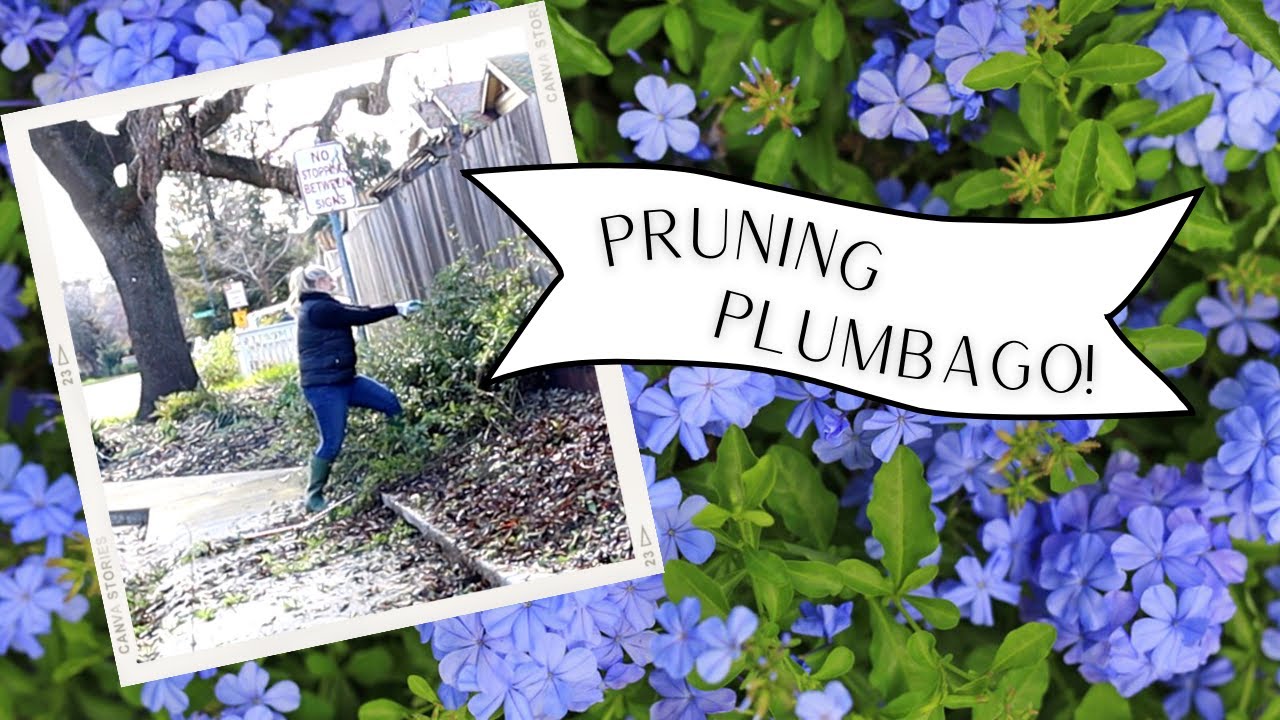To prune plumbago, start by removing dead or damaged branches, and then trim back about one-third of the plant to promote new growth and maintain its shape. Pruning plumbago encourages a fuller and healthier plant with more vibrant blooms.
Pruning is an important maintenance task for plumbago plants, ensuring their health and promoting optimal growth. A systematic approach to pruning can help maintain their shape, encourage new growth, and increase the vibrancy of their beautiful blooms. We will explore the proper techniques for pruning plumbago, focusing on removing dead or damaged branches and trimming back the plant to stimulate fresh growth.
By following these guidelines, you can keep your plumbago plants flourishing and enhance their aesthetic appeal in your garden or landscape.

Credit: yard-doc.com
Understanding Plumbago And Its Pruning Needs
Plumbago, a popular flowering plant, has unique pruning needs that are vital for its health and appearance. Understanding the characteristics of Plumbago is essential before delving into its pruning requirements. This plant features delicate blue or white flowers and thrives in warm climates.
Pruning plays a crucial role in maintaining its overall health and aesthetics. Assessing several factors beforehand is crucial for successful pruning. Consider the plant’s growth pattern, age, and desired shape when deciding how to prune it. Additionally, identify any damaged or diseased branches that should be removed to prevent spread.
Proper pruning techniques, such as cutting back old growth and promoting branching, can maintain the plant’s vigor and encourage abundant flowering. Taking these factors into account will enable you to prune your Plumbago effectively, ensuring a thriving and visually appealing plant.
When To Prune Plumbago
Pruning Plumbago is crucial for its optimal growth. To determine the right time to prune, watch out for signs like overgrown branches, wilted flowers, or sparse foliage. Considering the climate and specific growth patterns of Plumbago is essential for effective pruning timing.
Understanding the plant’s growth habits and the weather conditions in your region will help you decide the best time to prune. By trimming the plant during the appropriate season, you can encourage healthy growth and vibrant blooms. It’s important to note that Plumbago is typically pruned in late winter or early spring when it is still dormant.
Avoid pruning during periods of active growth as it may hinder the plant’s development. To maintain the beauty and vitality of your Plumbago, be mindful of the timing when it comes to pruning.
How to Prune Plumbago: Step by Step Guide
Pruning Plumbago is essential for its overall health and appearance. Before you begin, gather the necessary tools like pruning shears and gloves. Take a closer look at your Plumbago to determine its specific needs. Any dead or damaged branches should be removed with a clean cut.
To encourage new growth, cut back any overgrown branches, especially those obstructing sunlight. While shaping your Plumbago, use pruning techniques that are suitable for its growth habits. Make sure to avoid repetitive terms and keep the reader engaged with different expressions.
Pruning Plumbago will help maintain its beauty and keep it healthy.
Pruning Techniques For Different Types Of Plumbago
Pruning Plumbago is crucial for maintaining compact growth and encouraging abundant flowering. Different species, such as Plumbago auriculata and Plumbago zeylanica, require specific pruning considerations. To keep these plants in top shape, it’s important to follow proper techniques. Regular pruning helps remove dead or diseased branches and stimulates new growth.
Cut back older stems to promote fresh and vigorous blooms. When pruning Plumbago cultivars, be aware of their specific needs since different varieties may have unique growth habits or require specific pruning methods. By taking the time to prune your Plumbago plants correctly, you can ensure they remain healthy, aesthetically pleasing, and produce an abundance of beautiful flowers.
So grab your pruners and get ready to give your Plumbago the care it deserves.
Tips For Proper Care After Pruning
Pruning plumbago plants is essential for their health and appearance. Once you have completed the pruning process, it is important to provide proper care to ensure optimal growth. One crucial aspect is to supply adequate water and nutrients to the plants.
This will help them recover and promote new growth. Additionally, supporting the new growth with appropriate fertilization is vital. Choose a fertilizer that is balanced and specifically formulated for flowering plants. This will provide the necessary nutrients for robust growth.
Lastly, it is essential to monitor and manage any potential pests or diseases that may arise post-pruning. Regular inspection and timely intervention can prevent any setbacks and keep the plants healthy. Proper care after pruning is crucial for the overall success and longevity of your plumbago plants.
Common Mistakes To Avoid When Pruning Plumbago
Pruning Plumbago is essential for its growth and overall health, but it’s crucial to avoid common mistakes. Over-pruning can have negative effects on the plant’s well-being, leading to stunted growth and weakened branches. Timing is key when it comes to pruning plumbago, as doing it during the wrong season or growth stage can disrupt its natural cycle.
Additionally, using incorrect pruning techniques can harm the plant, causing unnecessary damage and potential disease. To ensure proper pruning, it’s important to follow guidelines specific to each plant variety and seek expert advice if necessary. By avoiding these common mistakes, you can maintain the health and beauty of your plumbago plants for years to come.
Frequently Asked Questions
Pruning Plumbago during the flowering season is not advisable as it may disrupt blooming. It’s best to prune Plumbago after it finishes flowering. In terms of frequency, prune your Plumbago once a year during the early spring or late winter.
However, if your Plumbago becomes overgrown or tangled, it is possible to perform severe pruning to rejuvenate the plant. Plumbago has a remarkable ability to recover from such pruning and will bounce back with new growth and blooms. Just make sure to water and fertilize it adequately after severe pruning to support its recovery.
Regular pruning will help maintain the shape and size of your Plumbago, promoting healthier growth and a more aesthetically pleasing appearance. Remember to use sharp and sterile pruning tools to avoid any damage or disease transmission.
Frequently Asked Questions Of How To Prune Plumbago
How Do You Prune Overgrown Plumbago?
To prune an overgrown plumbago, carefully remove dead or damaged branches and trim back excessive growth.
Should You Cut Back Blue Plumbago?
Yes, it is recommended to cut back blue plumbago to encourage new growth and maintain its shape.
How Do I Get My Plumbago To Bloom More?
To get your plumbago to bloom more, provide ample sunlight, water regularly, fertilize occasionally, and prune after flowering.
How Do You Prepare Plumbago For Winter?
To prepare plumbago for winter, prune it in late fall, providing a light mulch layer around the base for added protection.
Conclusion
To summarize, pruning plumbago is an essential task for maintaining the health and beauty of this versatile plant. By following the correct pruning techniques, you can encourage vigorous growth, maintain a compact shape, and promote abundant flowering. Remember to prune plumbago during the correct season, using clean and sharp tools to prevent the spread of diseases.
Start by removing dead or damaged branches, then trim back any overgrown or crossing stems. Keep in mind the growth habit of the plumbago, allowing it to retain its natural form while removing excessive growth. Don’t forget to monitor the plant’s growth and make regular adjustments as needed.
With proper pruning, your plumbago will flourish, providing you with a stunning display of vibrant flowers and lush foliage year after year. Happy pruning!

